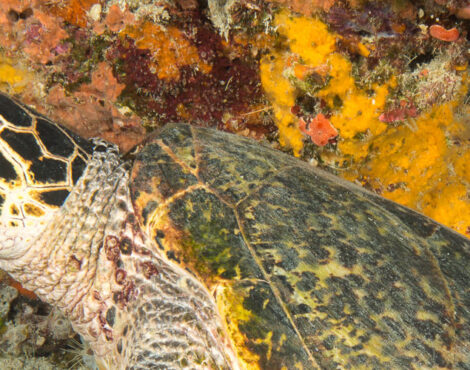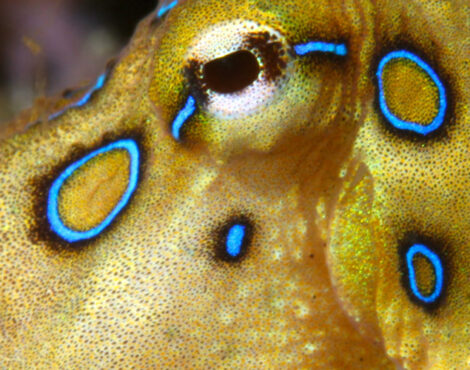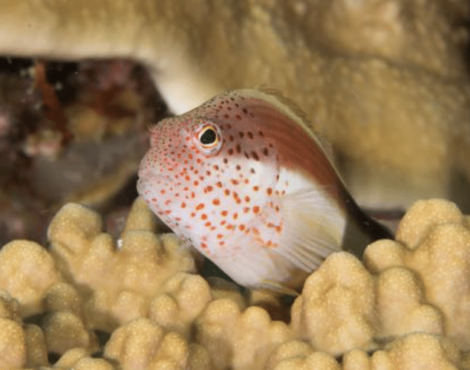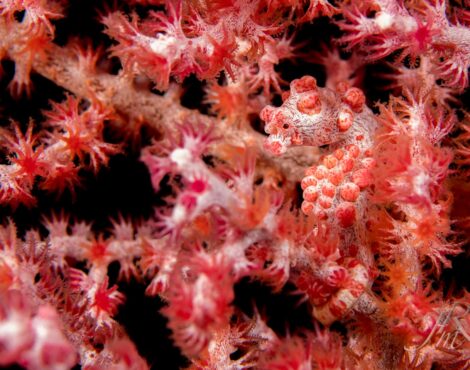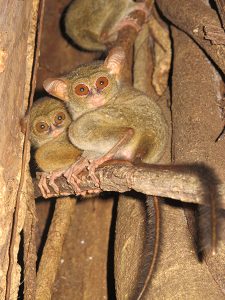 North Sulawesi may be best known for its amazing diving and snorkelling, but the planets 11th largest offers a lot more to the world than just an underwater paradise. Sulawesi has some of the highest levels of terrestrial biodiversity in the world, with 62% of its 127 mammal species being endemic, and more than 70 endemic bird species.
North Sulawesi may be best known for its amazing diving and snorkelling, but the planets 11th largest offers a lot more to the world than just an underwater paradise. Sulawesi has some of the highest levels of terrestrial biodiversity in the world, with 62% of its 127 mammal species being endemic, and more than 70 endemic bird species.
One of our most popular non-diving activities is our Tangkoko Reserve day excursion. Although this day trip offers just a glimpse into what Sulawesi has to offer, you can spot several endemic species of mammal such as the critically endangered Celebes Crested Macaque, or high climbing marsupials such as cuscus. For most visitors to Tangkoko reserve, the real highlight of the day is one of the worldâs smallest primate species â the Spectral Tarsier.
Weighing up to 130 grams and having a body length of up to 14 centimetres, the Spectral Tarsier (Tarsius spectrum) is a tiny primate species that is endemic to Sulawesi and a few other neighbouring islands. They can be found living in primary rainforests, however they seem to be more commonly found in secondary rainforest. This is because there is a higher abundance of food, and less predators. Although rare, spectral tarsiers have even been found living in mangroves.
All members of the tarsier family have certain distinctive traits. They have the largest eyes of any mammal relative to size and body weight. Their eyes are actually bigger than their brains, and they have the most powerful night vision of any other primate. Because their eyes are so large, they cannot move them inside their eye balls, instead having to rotate their head by up to 180 degrees in order to look around. Apart from their large eyes, another distinctive trait is their long slender fingers, which are believed to be longer than any other primate species relative to body size. They use these extremely elongated fingers for gripping trees and branches, as well as hunting.
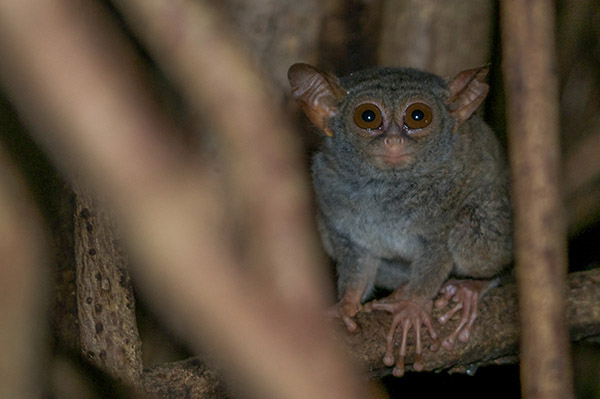
Unlike other primates, tarsiers are entirely carnivorous. Their diet consists mainly of flying insects such as grass hoppers, moths and cicada. Although it is uncommon, they can supplement their diet with other animals such as birds, lizards, snakes and bats. They find their food by honing in on any potential prey with their independently moving ears, and once targeted, they will ambush their prey by jumping on it and grasping it with its long fingers, and then biting to kill. It will usually return to its perch before consuming its food. Ambush hunting like this requires excellent hand eye coordination, but the tarsiers have adapted so well to it that they can catch and eat up to 10% of their body weight in a single night.
In the wild, spectral tarsiers have an average life span of ten years, although this could be longer as research is limited. They tend to form monogamous pairs, and will return to the same tree to sleep for several years. The pair will breed twice a year, and after a gestation period of roughly six months, the female tarsier will give birth to a single offspring. The new-born will weigh less than 25 grams, which might not sound like much, but it is roughly ¼ of their mothers weight. Upon birth, the baby tarsier will already have its eyes open, and it is already capable of moving and climbing independent of its mother, although it wonât hunt for around ten weeks, instead living off its mothers milk. They will become fully independent after around 12 weeks, and will reach sexual maturity after 17 months.
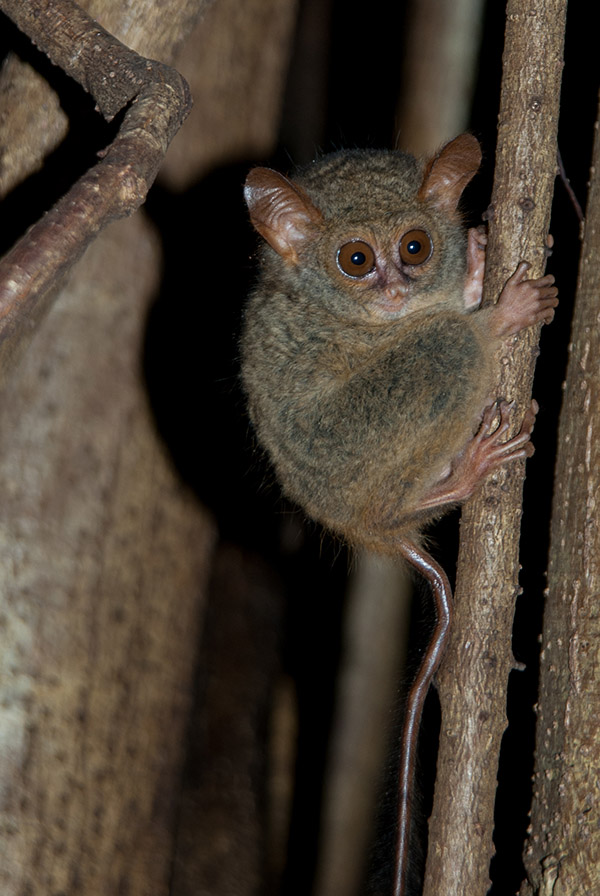
The forest can be a dangerous place, especially for one of the worldâs smallest primates. Predators include owls, civets, monitor lizards and snakes. Those that live close to human population are also predated on by feral cats. If a tarsier feels threatened by land based animals, they will omit a high pitched alarm call which calls all other local tarsiers to engage in mob-like behaviour, where they will work together to attack the predator. If the threat is an owl or other nocturnal raptor, the alarm call will be different, and instead of attacking, they will flee and hide.
Because tarsiers will always go back to the same tree every dawn, they are one of the easiest animals for us to find on our Tangkoko trekking tour. Although they are nocturnal, we donât have to wait until dark to see them. At around four oâclock, the sun begins to get lower in the sky and the tarsiers will move outside their trees and sit on the branches, waiting for it to get darker. This is the perfect opportunity for us to spot them, because once the sun begins the set, they will become very active and move into the forest. Because of the size of their eyes, you should never shine a light at them or use flash photography, especially after dark. The best way to get a photograph is to get to their âhome treeâ by 16:30 at the latest, and wait for them to move into the open. You may need to increase your ISO, as the forest will block out a lot of the sunâs rays.
Our Tangkoko trips can run almost every day of the year, but if you are interested in joining, you should check with reception or the dive centre in advance because the weather can be very different over on the other side of the North Sulawesi peninsular.


